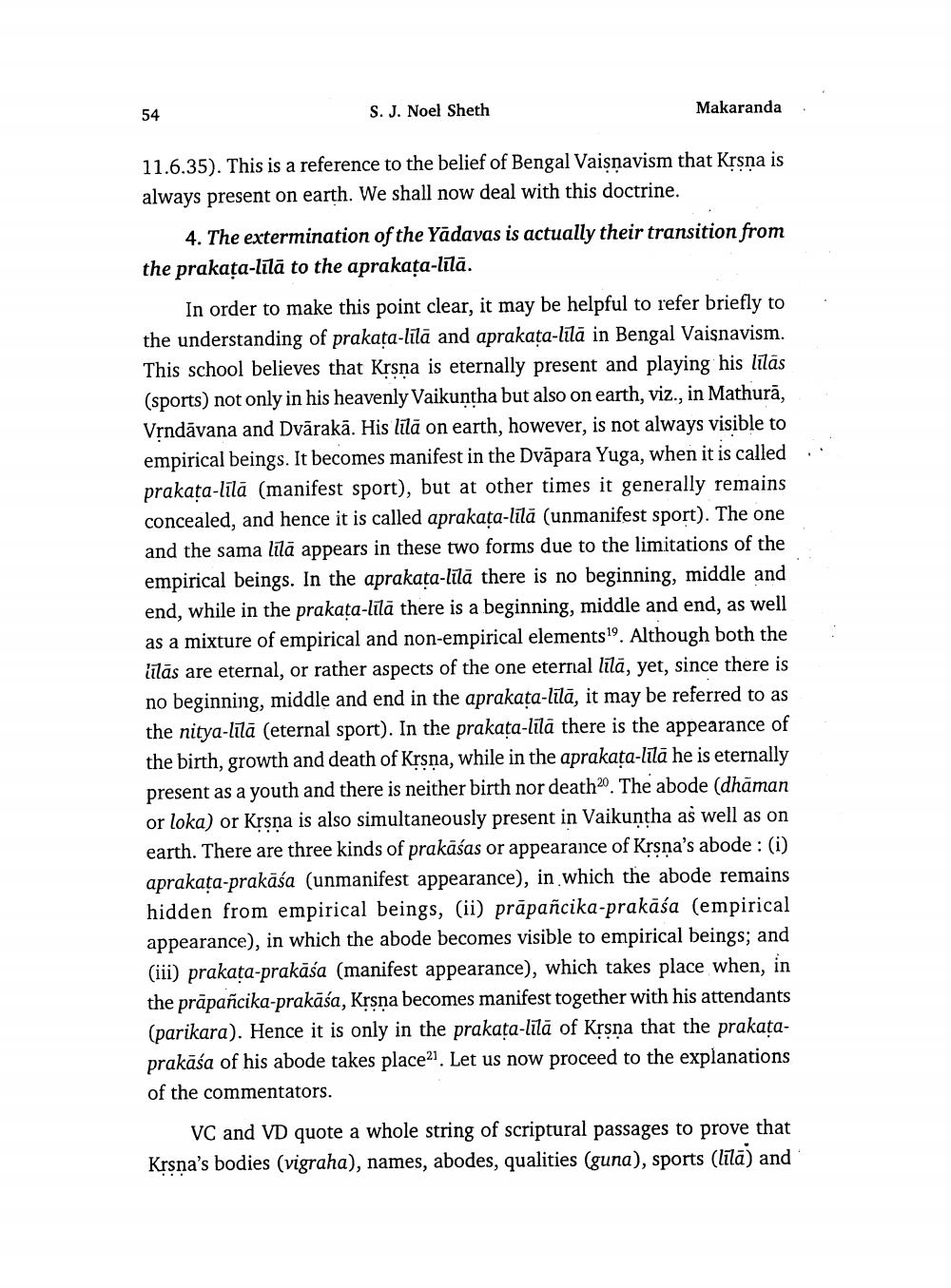________________
54
S. J. Noel Sheth
Makaranda
11.6.35). This is a reference to the belief of Bengal Vaisnavism that Krsna is always present on earth. We shall now deal with this doctrine.
4. The extermination of the Yadavas is actually their transition from the prakața-lila to the aprakaṭa-līlā.
In order to make this point clear, it may be helpful to refer briefly to the understanding of prakaṭa-lila and aprakaṭa-lila in Bengal Vaisnavism. This school believes that Kṛṣṇa is eternally present and playing his līlās (sports) not only in his heavenly Vaikuntha but also on earth, viz., in Mathura, Vṛndāvana and Dvārakā. His līlā on earth, however, is not always visible to empirical beings. It becomes manifest in the Dvāpara Yuga, when it is called prakaṭa-līlā (manifest sport), but at other times it generally remains concealed, and hence it is called aprakaṭa-līlā (unmanifest sport). The one and the sama līlā appears in these two forms due to the limitations of the empirical beings. In the aprakaṭa-lila there is no beginning, middle and end, while in the prakaṭa-līlā there is a beginning, middle and end, as well as a mixture of empirical and non-empirical elements 19. Although both the līlās are eternal, or rather aspects of the one eternal lila, yet, since there is no beginning, middle and end in the aprakaṭa-līlā, it may be referred to as the nitya-līlā (eternal sport). In the prakaṭa-lila there is the appearance of the birth, growth and death of Krsna, while in the aprakaṭa-līlā he is eternally present as a youth and there is neither birth nor death20. The abode (dhaman or loka) or Kṛṣṇa is also simultaneously present in Vaikuntha as well as on earth. There are three kinds of prakāśas or appearance of Krsna's abode : (i) aprakaṭa-prakāśa (unmanifest appearance), in which the abode remains hidden from empirical beings, (ii) prapañcika-prakāśa (empirical appearance), in which the abode becomes visible to empirical beings; and (iii) prakaṭa-prakāśa (manifest appearance), which takes place when, in the prapañcika-prakāśa, Krsna becomes manifest together with his attendants (parikara). Hence it is only in the prakaṭa-lila of Krsna that the prakataprakāśa of his abode takes place21. Let us now proceed to the explanations
of the commentators.
VC and VD quote a whole string of scriptural passages to prove that Krsna's bodies (vigraha), names, abodes, qualities (guna), sports (līlā) and




